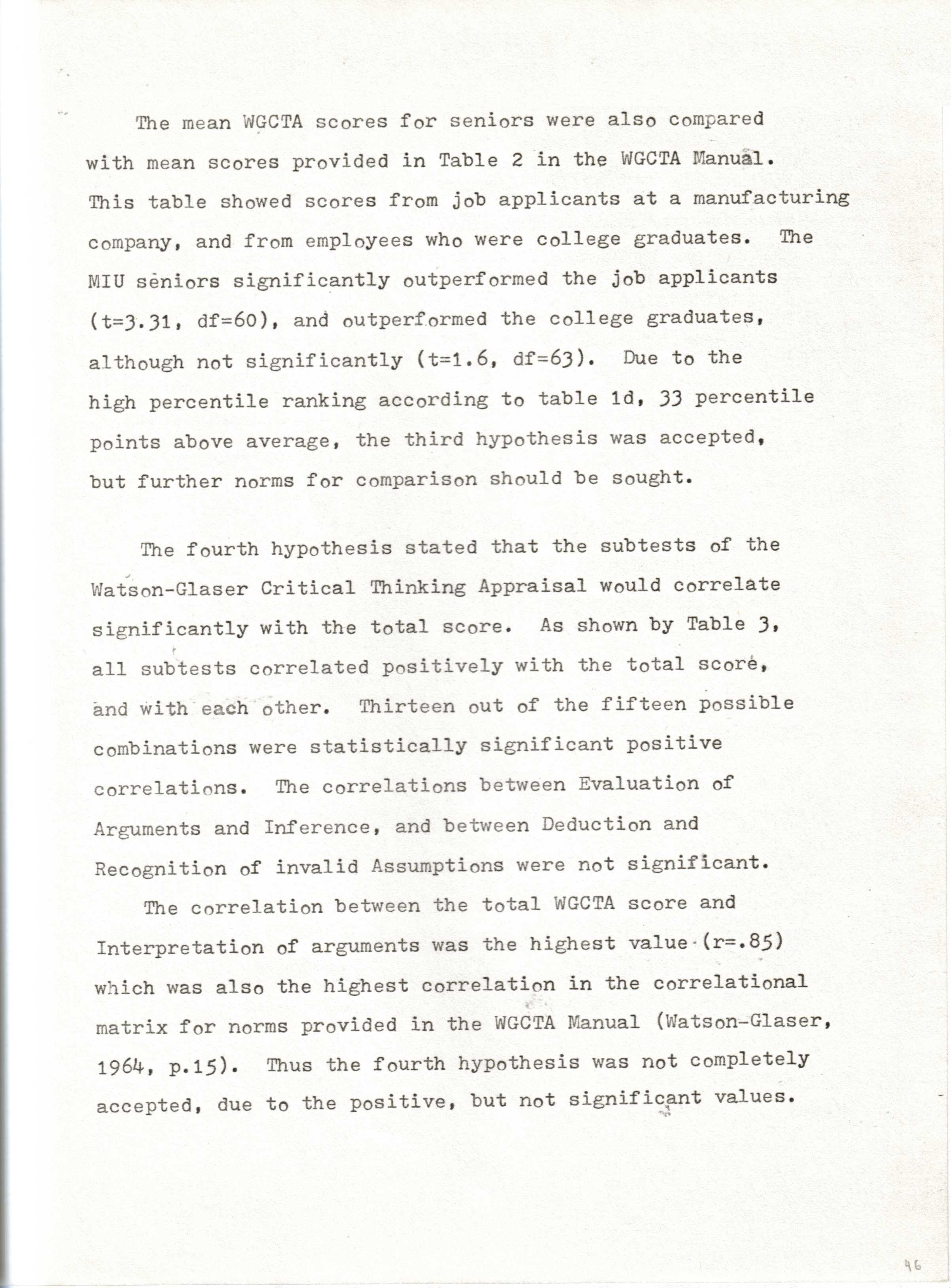
ctomeegmiu43.jpg
|
The second hypothesis was that MIU freshmen
would not
perform significantly different from
established norms for
other liberal arts freshmen. This
hypothesis was tested
using the table of norms (Table 1c) in the
Watson-Glaser
Critical Thinking Appraisal Manual. The
percentile ranks
in this table were based on results from 5,297 freshmen
at 15 liberal arts colleges in 13 states.
According to
this table, the mean score on the WGCTA of
70.53 would
place the average MIU freshman score in the 45th percentile,
slightly below average.
The freshmen WGCTA was also tested against
the mean
score for South Australian high school
seniors (Lucas, 1972) by a
t-test and no significant difference was
found. These
two methods of comparison led to the
confirmation of the second hypothesis.
The third hypothesis was that MIU seniors
would
outperform established norms for liberal
arts college
seniors. This hypothesis was tested using
the Table 1d
in the WGCTA Manual. The percentile ranks
for this table were obtained in a study with 554
first-semester senior
women at ten liberal arts colleges for
women in seven
states (Haas, 1963). According to this
table, the seniors'
mean score of 83.17 would place the average
MIU senior in
the 83rd percentile. Seniors at MIU were
thus higher in CT
with respect to their peers, than MIU
freshmen were.
|

ctomeegmiu46.jpg
|
The mean WGCTA scores for seniors were also
compared
with mean scores provided in Table 2 in the
WGCTA Manual.
This table showed scores from job
applicants at a manufacturing
company, and from employees who were
college graduates. The
MIU seniors significantly outperformed the
job applicants
(t=3.31, df=60), and outperformed the
college graduates,
although not significantly (t=1.6, df=63).
Due to the
high percentile ranking according to table
1d, 33 percentile
points above average, the third hypothesis
was accepted,
but further norms for comparison should be
sought.
The fourth hypothesis stated that the
subtests of the
Watson-Glaser Critical Thinking Appraisal would correlate
significantly with the total score as
shown by Table 3,
all subtests correlated positively with the
total score,
and with each other. Thirteen out of the
fifteen possible
combinations were statistically significant
positive
correlations. The correlations between
Evaluation of
Arguments and Inference, and between
Deduction and
Recognition of invalid Assumptions were not
significant.
The correlation between the total WGCTA
score and
Interpretation of arguments was the highest
value·(r=.85)
which was also the highest correlation in
the correlational
matrix for norms provided in the WGCTA
Manual (Watson-Glaser,
1964, p.15). Thus the fourth hypothesis was
not completely
accepted, due to the positive, but not
significant values. |